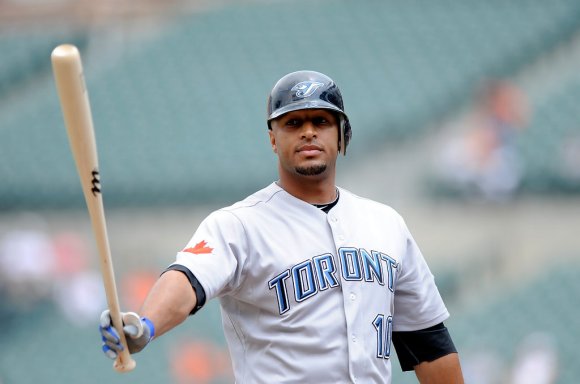
In 2007, Vernon Wells became something of a punchline. In his first season after signing a seven-year, $126 million extension with the Blue Jays, he hit just .245/.304/.402. That 85 OPS+ was a far cry from the performances that earned him the extension: a 118 OPS+ in the previous four years. The mockery came to us all too easily.
(Also in 2007: the first time I can remember the “your name’s Vernon” chants in the bleachers. Then again, that was my first year sitting in the bleachers with any frequency.)
After that stumbling block of a 2007 season, Wells came back to produce a 123 OPS+ in 2008, and then a 125 OPS+ in 2010, with an 86 OPS+ in 2009 causing further mockery. Normally it’s not necessary to run down a player’s performance like this, since we can all load up Baseball Reference. But it seems that people have completely forgotten about Wells’s positive contributions and mock only the mediocre and poor ones.
Why shouldn’t we hate the Vernon Wells trade and the $13 million it will cost the Yankees? There are quite a few reasons.
The Yanks are paying $13 million for good reason. The most common reaction I saw to the Yankees picking up $13 million of Wells’s contract: “He wouldn’t get that on the free agent market.” Of course he wouldn’t. He’s also not a free agent. But given his performances the last two years, how did the Angels get the Yankees to pay even $13 million? The answer lies in the distribution.
According to NYDN’s Mark Feinsand, the payments break down in the Yankees’ favor. The Angels will cover $9 million this year, leaving the Yankees on the hook for $12 million. That means the Angels will cover $20 million in 2014, leaving the Yankees to cover just $1 million. It gets better, though: because Wells’s average annual value is $18 million, the Yankees will actually get a $2 million luxury tax credit next year. So yes, taking on $13 million is too much, but it’s what the Yankees had to take in order to get the Angels to cover $20 million next year. It seems like a positive on the whole.
Platoon potential. The Yankees have a weakness against left-handed pitching, especially from the get-go. The addition of Youkilis could help, but he alone will not replace the production of Russell Martin and Nick Swisher against lefties. With Teixeira and Jeter out to start the year, they’re even more vulnerable. For his part, Wells did crush lefties in 2011, to the tune of a .851 OPS — and he was generally terrible that year. For his career he shows much stronger numbers against LHP, so he could help fortify that all-lefty outfield.
He’s healthy for now. After his abysmal 2007, Wells underwent surgery on his shoulder. Who knows how long that was bothering him during the season — he actually produced a .910 OPS in April and had dropped all the way to .735 by the end of May. After his poor 2009 he underwent wrist surgery and came back to produce a quality 2010 season. In 2011 and 2012 he missed 84 combined games with various injuries. Perhaps he can still produce league average numbers in a full, healthy season.
Whenever a team takes a risk on a player, the big qualifier is always whether he will prevent the teams from making other moves in the future. If the $12 million hit the Yankees take this year prevents them from making an upgrade at the deadline, then it’s easy to pan the deal. But in 2014 the deal will actually improve their budget situation. Combined with his platoon potential and his production when healthy, this could turn into a positive for the Yankees.
Seeing those positives is difficult at this point, given Wells’s recent history. On the whole, the trade isn’t likely to work out. There’s just too much working against the 34-year-old Wells at this point in his career. But there are some things to like about this trade. If they can squeeze a few quality months out of him, then it should work out just fine. It’s not like he’s replacing world beaters in Brennan Boesch and Ben Francisco.
Leave a Reply
You must be logged in to post a comment.